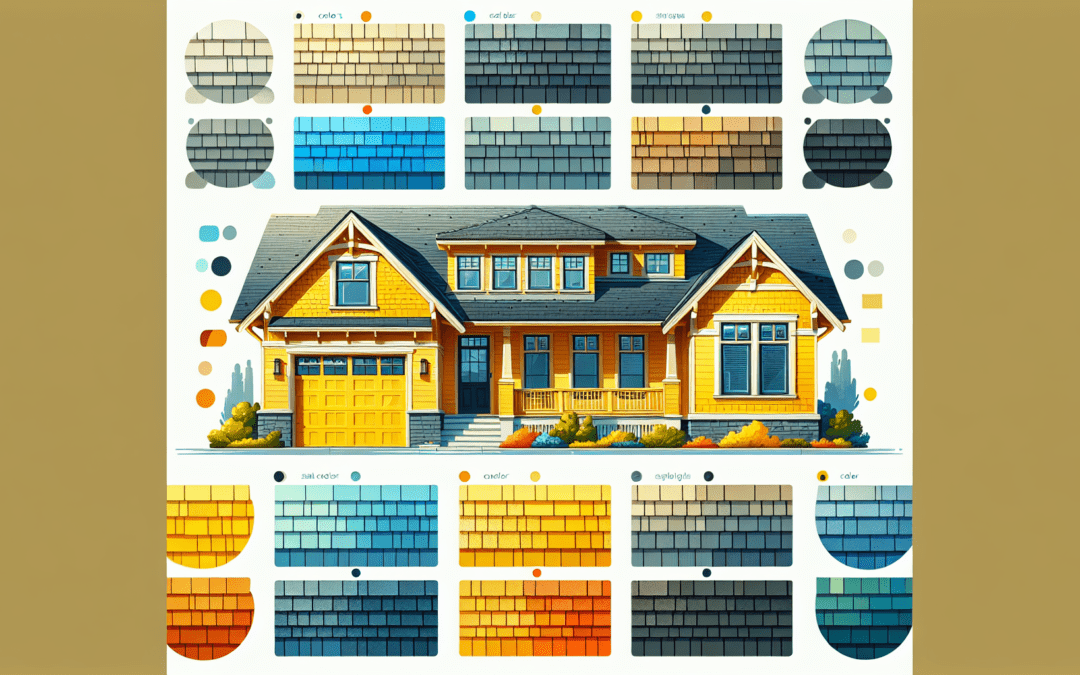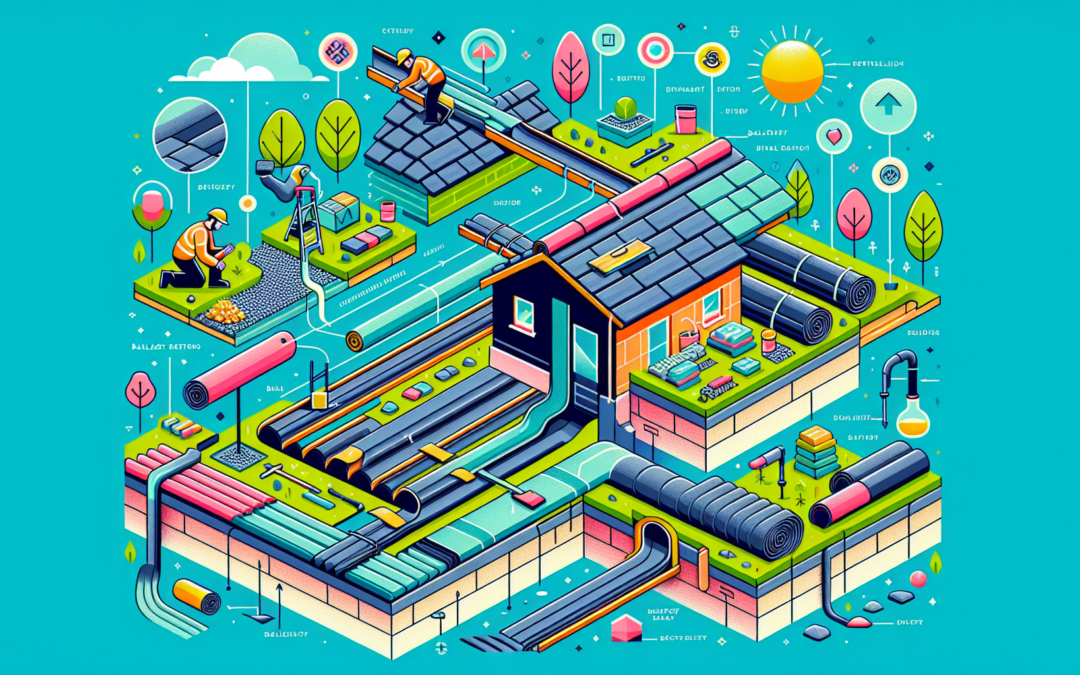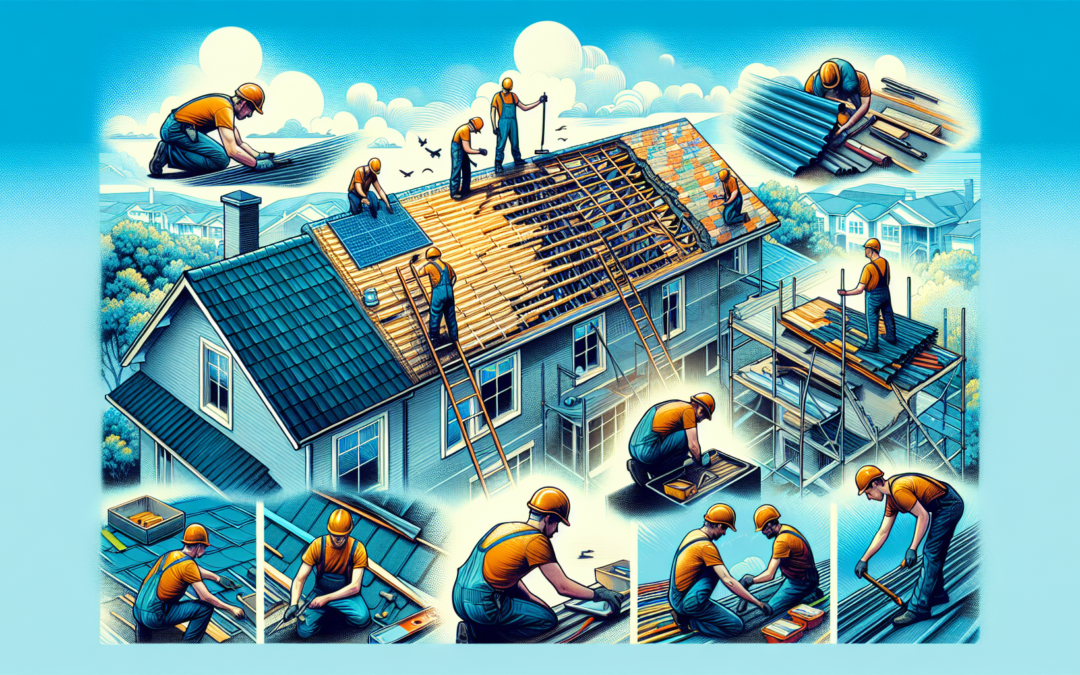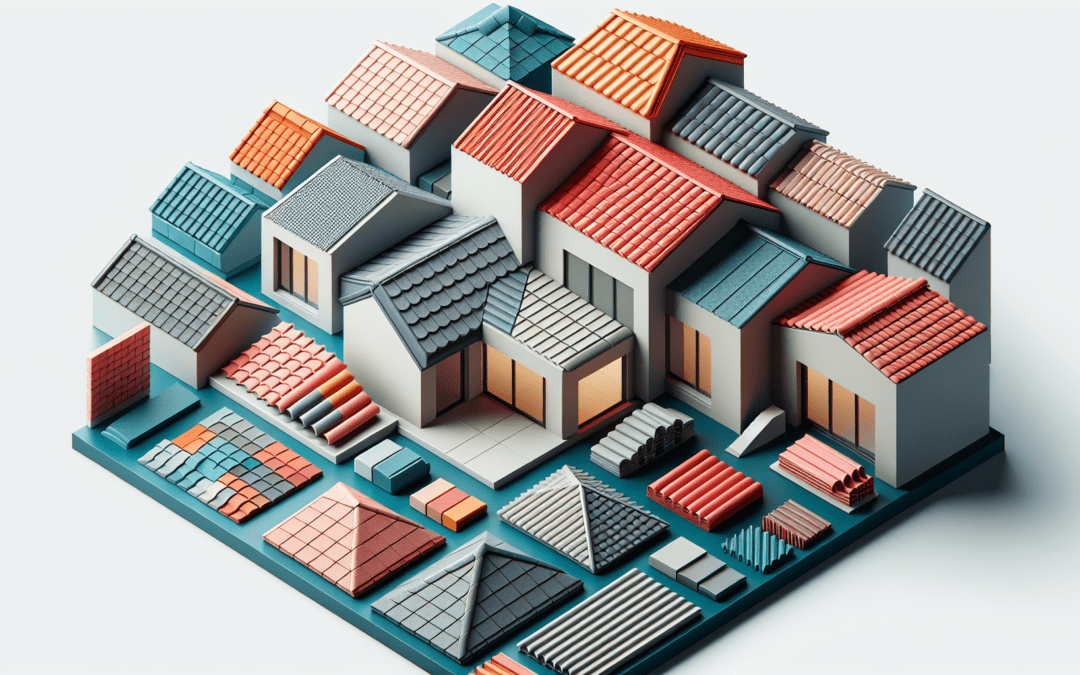
Mar 13, 2024 | Materials, Roofing
When we talk about houses, one of the most important parts is the roof. It keeps us safe from rain, sun, and all sorts of weather. Now, there’s this cool part of some roofs called the concrete roof ridge. Let’s dive into what it is and why it’s awesome.
What Are Concrete Roof Ridges?
Imagine the top part of your roof, where two slopes meet. That edge right at the top is called the ridge. Now, when you cover this ridge with a special kind of material made from concrete, it’s called a concrete roof ridge. They come in pieces, kind of like Lego, and fit together along the top of your roof. They’re not just good-looking, but they also play a big role in keeping your roof strong and weather-proof.
Key Reasons Why They Rock
1. Super Strong
Concrete is like the superhero of building materials. It’s super tough and can handle a lot of weight and pressure. That means when you have concrete roof ridges, they can help your roof handle things like heavy winds and storms without breaking a sweat.
2. Lasts a Long Time
Another awesome thing about them is that they last for ages. While some roof materials might need replacing after a couple of decades, concrete ridges can keep going strong for much longer. This means you don’t have to worry about fixing your roof all the time.
3. Keeps Water Out
We all know roofs are there to keep water out of our houses when it rains. Concrete roof ridges are like the cherry on top because they seal the deal, literally. They help make sure no water sneaks into your house through the roof, keeping you dry and cozy.
4. Fire Resistant
This is a big one. Concrete doesn’t catch fire like some other materials might. So, having concrete roof ridges can add an extra layer of protection for your home against fires. It’s like having a superhero shield on top of your house!
5. They Look Good
Lastly, let’s not forget about style. Concrete roof ridges can come in different shapes and colors. This means you can pick ones that make your roof look even cooler. It’s a way to add a touch of personality to your home while keeping it safe and sound.
Final Thoughts
So, there you have it. Concrete roof ridges are not just another part of the roof; they’re a key player in keeping your home safe, dry, and looking good. They’re tough, long-lasting, and a smart choice for any house. Next time you’re looking up at a roof, remember the cool role those concrete ridges are playing.

Mar 5, 2024 | Materials, Shingles
Choosing the right colors for your yellow house can make it stand out and look amazing. The shingle color on your roof plays a big role in this. Here are some of the best shingle colors to match with a yellow house:
1. Charcoal Gray
Charcoal gray is a deep, rich color that looks great with yellow. It’s like the color of dark storm clouds, and it can make the yellow color of your house pop. Charcoal gray is a classy choice that adds a modern touch to your home.
2. Brown
Brown shingles can also work well with a yellow house, especially if you’re going for a more natural and earthy feel. Browns can range from light sandy shades to deep chocolate tones. This color can help create a warm and welcoming vibe.
3. Black
Black is a bold choice, but it can be stunning against a yellow house. It creates a strong contrast that is sure to catch the eye. Black shingles can also make your house look more elegant and sophisticated.
4. Slate Gray
Slate gray is a lighter shade than charcoal and can give your house a softer look. It’s still a gray, so it goes well with yellow, but it’s not as intense. Slate gray can make your house feel cozy and inviting.
5. Green
If you’re feeling adventurous, green shingles can be a fun and unique choice for a yellow house. Green can remind people of nature, trees, and grass. It’s a cheerful and refreshing color that can make your house look lively.
Tips for Choosing the Right Shingle Color
When picking a shingle color for your yellow house, consider these tips:
- Look at your neighbors: You don’t have to match your neighbors, but it’s good to choose a color that looks nice in your neighborhood.
- Think about the light: Colors can look different in the morning than they do in the afternoon. Look at shingle samples at different times of day to see how they change.
- Don’t forget about style: Make sure the color you choose goes with the style of your house. For example, if your house has a country feel, a natural brown might be best.
Choosing the right shingle color for your yellow house can really boost its curb appeal. Whether you go with a classic gray, a natural brown, or something more daring like green, the perfect shingle color is out there. Keep these tips in mind, and you’ll find a color that makes your house look its best.

Mar 1, 2024 | Commercial, Materials, Roofing
When it comes to covering a building, the roof plays a huge role in protecting it from weather like rain, snow, and super hot sun. There’s one type of roofing called a ballasted rubber roof that’s especially interesting. Let’s dive into what this is all about, its benefits, and how it’s put on buildings.
What is a Ballasted Rubber Roof?
A ballasted rubber roof involves laying down large rubber sheets on top of a roof. These sheets are not glued or nailed down. Instead, they are held in place by heavy materials like stones or pavers. This is what ballasted means – using weight to keep things in place. These rubber sheets are great at keeping water out and can be fitted to lots of different roof shapes and sizes.
Benefits of Ballasted Rubber Roofs
Why choose a ballasted rubber roof? There are several cool benefits:
- Easy to Install: Since the rubber sheets are not attached with nails or glue, they can be laid down more quickly than some other types of roofs. This can save time and money.
- Durable: The rubber material is tough and can handle all sorts of weather without breaking or getting damaged easily. It also lasts a long time, which means you won’t have to replace it as often.
- Eco-friendly: Some of the rubber used can be recycled, which is good for the planet. Plus, the stones or pavers that weigh down the sheets can sometimes be gathered from the local area, reducing the need for transporting materials from far away.
- Protects the Roof: Besides keeping water out, the weight on top can help protect the roof from being damaged by things like wind or walking on it.
How is a Ballasted Rubber Roof Installed?
Putting in a ballasted rubber roof is a unique process:
- Preparation: First, the roof surface is cleaned and checked for any damage. Any problems have to be fixed before the rubber goes down.
- Laying the Rubber Sheets: Next, big rubber sheets are rolled out over the roof. The edges of these sheets overlap a bit to make sure no water gets through.
- Adding the Ballast: Once the rubber is laid out, heavy materials like gravel, stones, or concrete pavers are spread over the top. These materials are what keep the rubber sheets in place.
This roof setup can be done relatively quickly, and it works well for flat or low-sloped roofs.
Conclusion
Ballasted rubber roofs are a smart choice for many buildings. They are quick to install, last a long time, are good for the environment, and help protect the building from weather damage. If you’re considering a new roof, this might be a great option to think about!

Feb 29, 2024 | Materials, Roofing
What is EPDM Roofing?
When we talk about roofs, there are many kinds we can choose from. But have you heard of EPDM roofing? EPDM stands for Ethylene Propylene Diene Monomer. It’s a mouthful, but in simple terms, it’s a kind of rubber. This rubber is very strong and can last a long time, making it perfect for roofs. The cool thing about EPDM roofing is that it’s not just tough; it’s also flexible, which means it can expand and shrink with the weather without cracking or leaking. This makes it a great choice for places with changing weather conditions.
What Does Ballasted Mean?
So, what do we mean when we say ballasted EPDM roofing? Ballasted simply means that the EPDM rubber sheet on the roof is held down by weight. Instead of using glue or nails, this type of roof uses stones or gravel to keep the rubber in place. These stones are not just any stones, though; they are specially selected for their size and weight to make sure they do the job right.
How Does Ballasted EPDM Roofing Work?
Putting together a ballasted EPDM roofing system is like building a big puzzle. First, a protective layer is laid down over the roof to keep it safe from the rubber sheet. Then, the big, flexible sheets of EPDM rubber are rolled out across the roof. These sheets overlap a bit at the edges to make sure water can’t sneak through. Finally, the stones or gravel are spread out over the rubber sheet to hold everything in place. The weight of the stones keeps the rubber sheet secure, even when the wind blows or the rain pours down.
Advantages of Ballasted EPDM Roofing Systems
Why might someone choose a ballasted EPDM roofing system? Well, there are several good reasons. First, it’s a bit easier to install since there’s no need for glue or nails. This can make the whole process quicker and less expensive. Another big plus is that if a part of the roof needs to be fixed, it’s easy to just move the stones and work on that spot. The EPDM rubber is also great at keeping water out, making it a reliable choice for buildings in wet climates. And because the rubber is long-lasting, this type of roof doesn’t need to be replaced as often as some other kinds.
Is a Ballasted EPDM Roofing System Right for You?
Choosing the right roof depends on many things, like the weather in your area and what your building is used for. Ballasted EPDM roofing systems are an excellent option for many, but they’re not perfect for everyone. They work best on flat or slightly sloping roofs. If you’re thinking about getting a new roof, it’s a good idea to talk to a professional who can help you decide if a ballasted EPDM roofing system is a good fit for your needs.
Conclusion
In the end, ballasted EPDM roofing systems offer a durable, cost-effective, and easy-to-maintain option for those looking for new roofing. With the benefits of simplicity in installation and repairs, along with strong weather resistance, it’s a choice worth considering for many building owners.

Feb 21, 2024 | Materials, Roofing
When it comes to keeping your house safe and sound, picking the right pieces for your roof is key. One important part is the ridge tiles that sit on top of your roof. They don’t just make your home look nice; they also stop water from getting in. If you’re thinking about using concrete ridge tiles, you’ve made a great choice! They’re strong, can last a long time, and don’t cost too much. But, with so many options, how do you pick the best ones? Here’s what you need to know.
Why Pick Concrete?
Concrete is a mix of sand, cement, and water, and it’s really good for making ridge tiles because it’s tough. It can handle all sorts of weather, like hot sun, heavy rain, and even snow, without breaking down quickly. Plus, it’s not expensive, which means you get a good deal for something that lasts long.
Styles and Colors
Concrete ridge tiles come in different shapes and colors. Some are smooth and straight, while others might have patterns or look like old-fashioned clay tiles. When choosing, think about your home’s style. Do you want it to look modern or more traditional? There are enough options to match any house’s look. For color, pick one that goes well with the rest of your roof and walls. Most people choose similar colors to make their home look neat and put together.
Quality and Durability
Not all concrete tiles are made the same. Some are stronger and will last longer. When shopping, look for tiles that have a good rating for being tough and weather-resistant. This might mean paying a bit more, but it’s worth it since you won’t have to replace them as often. Also, check if they come with a warranty. This is a promise from the company that they believe in their product and will replace them if there are any issues.
Installation
Putting in ridge tiles can be tricky, so it’s usually best to hire professionals. They know exactly how to fit them so your roof looks great and doesn’t leak. When choosing tiles, ask about the installation process. Some types might be easier to install, which could save you some money on labor costs.
Think About the Environment
Finally, it’s good to think about the environment when choosing your tiles. Concrete is not hard to make and doesn’t harm the planet as much as some other materials. However, it still has some impact. Look for tiles made with less water and energy or from companies that are trying to reduce their carbon footprint. This way, you’re not just protecting your home but also helping the planet.
Choosing the best concrete ridge tiles for your home means looking at their style, how strong they are, and how they’re made. It’s also important to think about how they will be put on your roof and their impact on the environment. Take your time to look at all your options and talk to professionals if you need advice. In the end, you’ll have a roof that not only looks great but also does a fantastic job at protecting your home.





